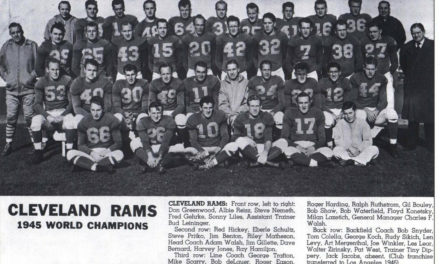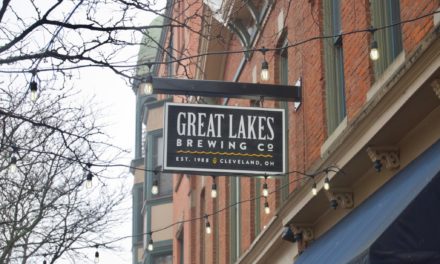Cleveland History
October 7, 1925: The dedication of Cleveland Hopkins International Airport marked a significant milestone in aviation history, as it was one of the first municipally owned airports in the United States. The airport’s opening helped to establish Cleveland as a critical hub for air travel and commerce in the early 20th century.
October 8, 1867: John D. Rockefeller founded the Standard Oil Company in Cleveland, Ohio. This foundational event initiated the transformation of the oil industry and propelled Rockefeller to become one of the world’s wealthiest and most influential businessmen. Standard Oil’s dominance in the industry also significantly boosted Cleveland’s economy and shaped its industrial landscape.
October 10, 1932: The opening of the Hope Memorial Bridge, adorned with the iconic “Guardians of Transportation” statues, enhanced Cleveland’s architectural and cultural heritage. The bridge not only serves as a vital transportation link between Cleveland’s east and west sides but also as a symbol of the city’s commitment to monumental infrastructure during the Great Depression.
October 12, 1931: The dedication of Severance Hall, the home of the Cleveland Orchestra, solidified its status as one of the leading concert venues in the world. Renowned for its exquisite Neoclassical architecture and exceptional acoustics, Severance Hall has hosted decades of world-class performances, significantly enriching Cleveland’s cultural offerings.
October 13, 1972: The Cleveland Clinic Foundation achieved a medical milestone by completing its first coronary artery bypass surgery. This procedure underscored the clinic’s role as a pioneer in cardiac care and medical innovation, contributing to its reputation as one of the leading healthcare providers globally.
World History
October 7, 1571: The Battle of Lepanto took place on this day, marking one of the largest and last naval battles fought solely between rowing vessels. The Holy League, a coalition of southern European Catholic maritime states, defeated the fleet of the Ottoman Empire in the Gulf of Patras. This battle curtailed Ottoman naval dominance in the Mediterranean and is often seen as a pivotal moment in Mediterranean history.
October 8, 1871: The Great Chicago Fire began, famously rumored to have been started by Mrs. O’Leary’s cow. Over the course of two days, the fire destroyed thousands of buildings, killed approximately 300 people, and left 100,000 homeless. The event led to sweeping changes in building and fire safety codes and reshaped the urban landscape of Chicago, promoting the use of fire-resistant materials in urban construction.
October 10, 732: The Battle of Tours, also known as the Battle of Poitiers, was fought near Tours, France. Frankish leader Charles Martel and his troops defeated a large army of the Umayyad Caliphate, halting the northward advance of Islam from the Iberian Peninsula. This battle is often considered a turning point in European history, preserving western Christianity as the dominant faith of Europe.
October 12, 1492: Christopher Columbus made his first landfall in the New World in the Bahamas. This momentous event marked the beginning of centuries of exploration and colonization by European powers in the Americas. It profoundly impacted the historical trajectory of the Western Hemisphere, initiating widespread cultural exchanges and significant geopolitical shifts.
October 13, 1792: The cornerstone of the White House, the official residence and principal workplace of the United States presidents, was laid in Washington, D.C. The building’s construction and its enduring role as a symbol of the U.S. presidency highlight significant architectural and historical narratives about American national identity and governance.






